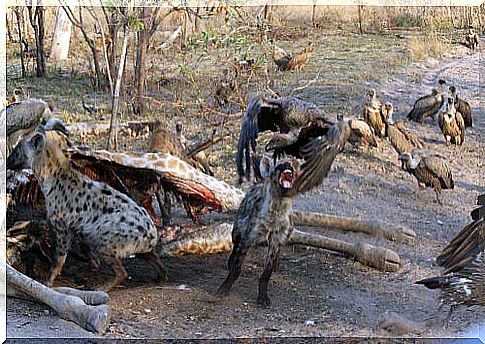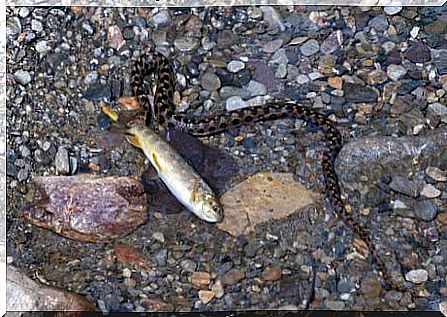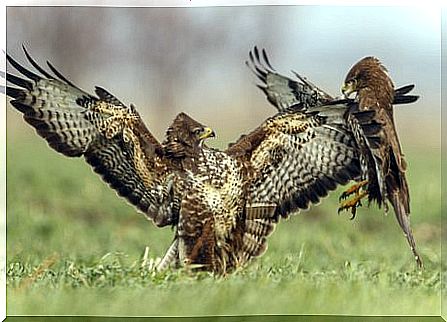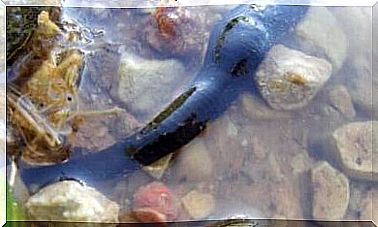Kleptoparasitism: Examples And Curiosities

The Kleptoparasitism is defined as: “theft of a prey or other food that was previously captured or collected by another individual.” One also speaks of “food parasitism”.
Nowadays it is also used to define the behavior of individuals of the same species. In this case one speaks of intraspecific kleptoparasitism. The kleptoparasite is the one that steals while the host is the one that is stolen.
The concept was introduced by Rothschild and Clay in 1952. Nowadays it is recognized as a nutritional strategy that allows for limited resources to be obtained. 1979 Brockmann and Barnard differentiated between two groups:
- Specialists. They have a number of morphological adaptations, such as the ability to increase flight speed and improve agility. In addition, they get most of their nutrition through this method. It is an interspecific kleptoparasitism.
- Opportunists. Those who only steal food on specific occasions, such as when it is visible in the host’s beak. These animals apply this practice in an intraspecific and interspecific way.
There are various studies that are gathering information about this strange inter-species method. This procedure applies not only to the theft of food, but also to the theft of materials for building nests, etc.
The bibliography has focused on studying this ecological relationship between birds, particularly seabirds. However, there are also cases of kleptoparasitism in various other groups of animals, both vertebrates and invertebrates.
Factors Affecting Kleptoparasitism
The following factors can influence this strategy:
- Environmental conditions
- The number of potential hosts in relation to the number of kleptoparasites
- The size of the kleptoparasite in relation to the host
- The number of kleptoparasites involved in a chase
- The strategy used by the kleptoparasite
- Nutritional quality of the controversial prey
Examples of kleptoparasitism
The viper snake or water snake (Natrix maura)
The habitat of the viper snake is in the western Mediterranean, including the Iberian Peninsula, where it is widespread. Their diet consists mainly of fish and amphibians.

Recently, the practice of intraspecific kleptoparasitism has been observed in this snake.
The strange thing is that kleptoparasitism had only been studied in some reptile species and never in the viper snake. Apparently, this technique is typical of high-concentration regions where it is not easy to get the prey.
Common buzzards of the Canary Islands (Buteo buteo)
The common buzzard is a bird belonging to the genus Buteo. These birds are both victims and perpetrators: on the one hand, they are forced to give their food to larger birds of prey. But on the other hand, they rob even smaller birds of their food.

Recently, this practice was observed by a group of scientists on the island of Tenerife (Siverio et al., 2017). In the buzzards , kleptoparasitism has an opportunistic character: when they come across a bird, they take advantage of the opportunity and steal its prey.
Hyenas
The hyena belongs to the Hyaenidae family and is arguably the most characteristic kleptoparasite mammal. Known primarily as a scavenger, she also practices kleptoparasitism when given the chance.

This family can only be found on the African continent. This is due to a number of events such as climate change and human activity.
Curiosities
This practice has been observed in invertebrates, arthropods being one of the groups. Among the arthropods we have the spider as an example, as the study of the species Argyrodes elevatus reveals.
Apparently, this spider is practicing kleptoparasitism in order to woo another spider. That is, it is a wedding present. The male steals a prey in the community network of his host, Metepeira incrassata .
This prey is intended for the female spider. While it is being eaten, the male copulates with it. It is the first documented case of kleptoparasitism of the species Argyrodes elevatus for the purpose of a wedding gift.
Kleptoparasitism is a little known but very interesting strategy. Animals adopt behaviors that enable them to survive and develop, also at the expense of other individuals.
Other animal behaviors, such as coprophagia, are also strange to us.









